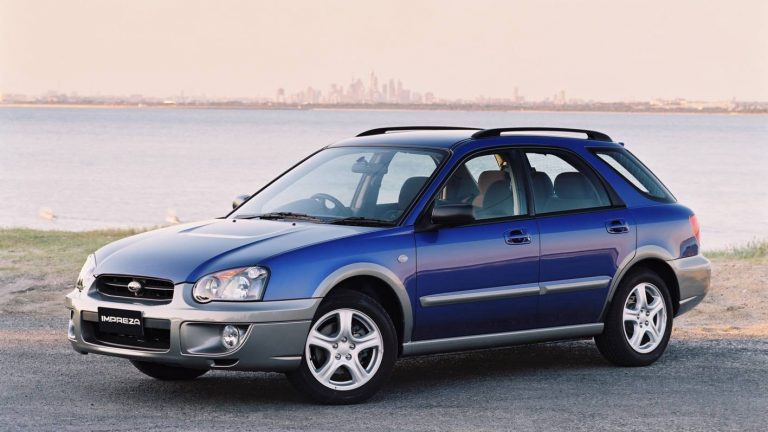[su_image_carousel source=”media: 50901,50902,50903,50904,50905,50906,50907″]
Introduction
SThe Subaru EJ201 and EJ202 were 2.0-litre horizontally-opposed (or ‘boxer’) four-cylinder petrol engines. Replacing the EJ20 Phase I engine, the EJ201 and EJ202 were members of Subaru’s EJ Phase II engine family which introduced newly designed cylinder heads with ‘tumble swirl’ intake ports.
Please note that this article considers the EJ201 and EJ202 engines as they were supplied in Australian-delivered vehicles; specifications for other markets may vary.
[su_table responsive=”yes”]
| Code | Model | Engine | Trans. | Power | Torque | Years |
|---|---|---|---|---|---|---|
| EJ201 | Subaru BE/BH Liberty | 2.0-litre petrol F4 | 5sp man., 4sp auto |
92kW at 5600rpm | 184Nm at 3600rpm | 1998-03 |
| Subaru GD/GG Impreza | 2.0-litre petrol F4 | 5sp man., 4sp auto |
92kW at 5600rpm | 184Nm at 3600rpm | 2000-03 | |
| EJ202 | Subaru SF Forester | 2.0-litre petrol F4 | 5sp man., 4sp auto |
92kW at 5600rpm | 184Nm at 3600rpm | 1998-02 |
| Subaru BL/BP Liberty | 2.0-litre petrol F4 | 5sp man., 4sp auto |
101kW at 5600rpm | 187Nm at 4400rpm | 2003-06 |
[/su_table]
Block and crankcase
Like its EJ20 predecessor, the Subaru EJ201 and EJ202 engines had an aluminium alloy block with 92.0 mm bores – with cast iron dry-type cylinder liners – and a 75.0 mm stroke for a capacity of 1994 cc. The cylinder block for the EJ201 and EJ202 engines had an open-deck design whereby the cylinder walls were supported at the three and nine o’clock positions.
The crankcase for the EJ201 and EJ202 engines had five main bearings and the flywheel housing was cast with the crankcase for increased rigidity. For the EJ201 and EJ202 engines, the crankshaft thrust bearing was relocated to the rear of the crankshaft – this reduced the transfer of natural engine frequencies to the transmission and driveline.
Pistons
While the pistons for the EJ201 and EJ202 engines continued to be produced from cast aluminium, the pistons were lighter than those in its EJ20 predecessor. To reduce friction, the pistons for the EJ201 and EJ202 engines had reduced piston pin offset and a molybdenum coating. Other features of the pistons included solid-type piston skirts, flat top combustion surfaces and reduced top land to cylinder clearance.
Air intake
The air intake system for the EJ201 and EJ202 engines was tuned to achieve high torque in the low to medium engine speed range. For lower intake air temperature, the air inlet duct received air from outside the under bonnet area. Furthermore, two resonators were incorporated in the air duct to ‘smooth’ the air flow and a large still air box – mounted on the throttle chamber – improved engine response and quietness.
Cylinder head
The EJ201 and EJ202 engines had an aluminium alloy cylinder head with cross-flow cooling. Unlike the EJ20 engine, the intake ports for the EJ201 and EJ202 engines created a ‘tumble swirl’ motion for air as it entered the cylinder for better mixing of the air and fuel for more uniform flame travel and faster combustion. According to Subaru, the tumble swirl action allowed for maximum gas pressure (downward force) to be applied to the piston 10-15 degrees ATDC (after top dead centre) when the maximum turning moment on the crankshaft occurred, thereby increasing power output.
Camshaft and valves
The EJ201 and EJ202 engines had a hollow-type single overhead camshaft (SOHC) per cylinder bank. Due to the cylinder head offset, the left camshaft was longer than the right camshaft to align the cam belt sprockets. Both camshafts were driven by a single belt which had round profile teeth for quiet operation and was constructed of wear-resistant double canvas and heat resistant rubber materials with a wire core. Furthermore, the timing belt had an automatic tensioner which allowed for thermal expansion and contraction. The recommended replacement interval for the cam belt was 100,000 kilometres or four years, whichever occurred first.
The EJ201 and EJ202 engines had four valves per cylinder that were actuated by roller rocker arms. Valve clearance checking/adjustment was only necessary every 150,000 kms.
Injection and ignition
The EJ201 and EJ202 engines had multi-point sequential fuel injection and centrally located spark plugs. The EJ201 and EJ202 engines had two ignition coils (one for each pair of cylinders, i.e. 1-2 and 3-4) which fired the spark plugs directly twice per cycle. The ignition knock control system had ‘fuzzy logic’ that enabled the maximum ignition advanced angle to be used without detonation since the programme continually adapted to changes in environmental conditions and fuel quality.
The EJ201 and EJ202 engines had a compression ratio of 10.1:1, compared to 9.7:1 for its EJ20J predecessor. According to Subaru, the better air/fuel mixing provided by the tumble swirl intake ports made the EJ201 and EJ202 engines less susceptible to detonation or pinging, enabling a higher compression ratio.
For the EJ201 and EJ202 engines, the injection and firing order was 1-3-2-4.
2003 Subaru BL/BP Liberty: EJ202 changes
For the Subaru BL/BP Liberty which was introduced in 2003, a number of changes were introduced for the EJ202 engine:
- A lighter cylinder block and head;
- Thinner and lighter cylinder liners;
- A sintered crankshaft journal;
- A re-shaped intake manifold; and,
- A new 4-2-1 exhaust system with equal length header pipes.



